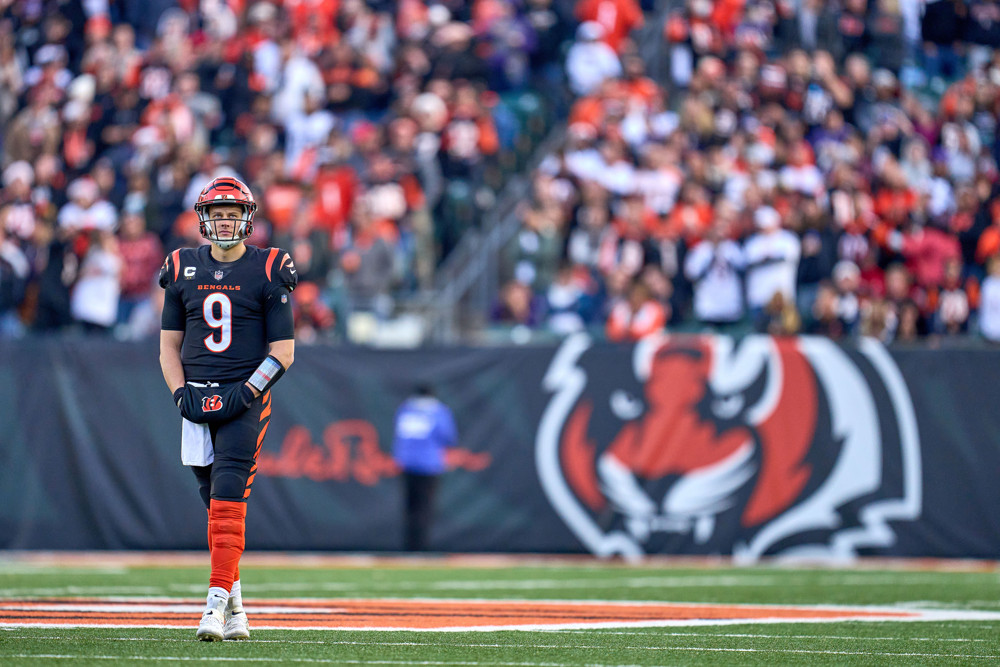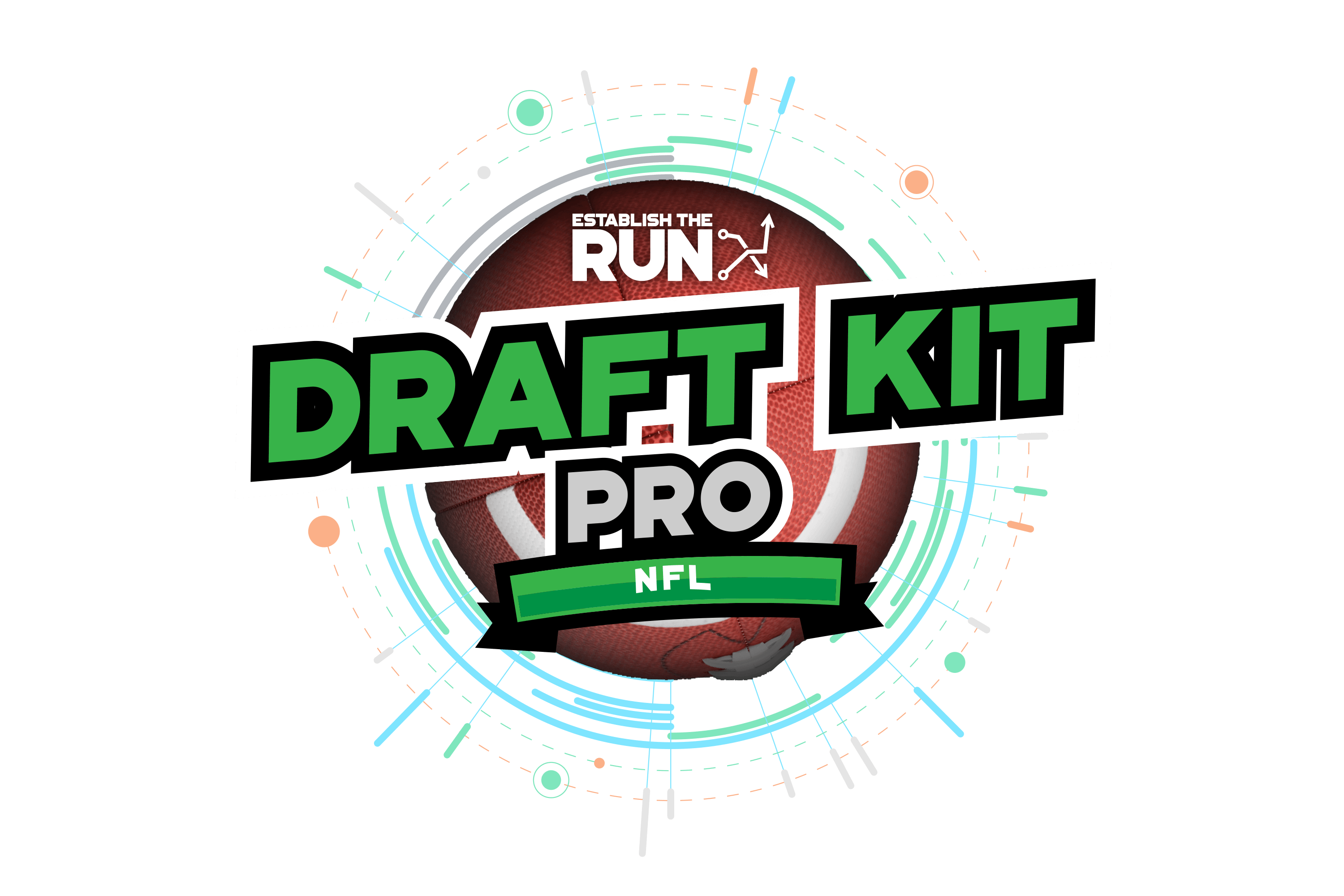IMPORTANT: If you plan to play DFS this season, we have everything you need to win. Projections (base, ceiling, and ownership), shows, and context around each main slate. Click here for details.
IMPORTANT 2: ETR’s NFL Player Props are not part of the in-season package. Click here for a full FAQ on our plan for props this season.
You want to win $1 million playing fantasy football? So do I.
DraftKings’ weekly NFL Milly Maker remains the flagship DFS tournament. It’s a unique event because it often has more than 200,000 entries, roughly 30% of the prize pool goes to first place, and someone becomes a millionaire off of a $20 buy-in.
This “put up a little to win a lot” model is always going to be incredibly popular. It attracts tons of unsophisticated and casual players, making the Milly Maker a very +EV tournament for thoughtful and sharp players. Of course, we need to be aware that realizing the positive expectation is very difficult at these massive field sizes.
So how do we win it? By picking the right players, dummy! Of course, that is first-level thinking and not a real or thoughtful strategy. We are not nearly as good at picking the “right” players as we think we are. So while much of the field is just selecting players they like, we should optimize for first place through other strategies.
That means thinking about lineup construction, salary allocation, flex usage, correlation, ownership leverage, and more. If we can understand what wins this tournament, we can build a repeatable process that raises our chances of shipping.
The data you see below was compiled by Mike Leone, our Director of Analytics.
* Note — this data is from the top 100 teams and the field in main slate DraftKings Milly Makers in 2021 AND 2022 Weeks 1-16. That’s 3,234 teams, including ties.
WHAT WE FOUND
1. Double stack your quarterback with WR-WR or WR-TE
“Double stack” means rostering a QB with exactly two of his teammates at any position. For example, Joe Burrow with Ja’Marr Chase and Tee Higgins. Or Josh Allen with Stefon Diggs and Dawson Knox. Even though it’s smaller than it used to be, we still gain the most leverage on the field with this construction.
Single stacks (a QB with one pass catcher) are a neutral bet. Naked QB (no pass catchers) is a losing bet. Stacks with three or four pass-catchers are bad bets, as we need everyone in our lineup to hit their ceiling.
Data: The field played double stacks 30.6% of the time. But double stacks finished in the top 100 35.7% of the time. … The field stacks with an RB 16.5% of the time, but top-100 teams do it 13.9% of the time. … The field stacks with TWO WRs 12.1% of the time, but top-100 teams do it 16.2% of the time.
2. Use a “bring-back”
A “bring-back” means rostering a player on the opponent of your QB stack. For example, if the Bengals are playing the Ravens and we have the Burrow/Chase/Tee stack, then we also should include a Raven. The idea is to increase correlation — if Burrow hits Tee for a 60-yard TD (what we need to win), then the Ravens will play faster, more pass-centric, and more aggressively.
Note that bringing it back with an RB is slightly negative leverage, but still in play. But bringing it back with a WR or TE showed solid positive leverage over the field. The best leverage is bringing it back with exactly one WR.
Data: The field used a bring-back 35.3% of the time. But top-100 teams did it 46.0% of the time. … The field used a single WR bring-back 29.5% of the time, but top-100 teams did it 40.9% of the time.
3. Use all or most of your salary cap
Leaving salary space on the table is not the way to get unique. It causes us to lose too much equity in projection. Note that the field used an average of $49,874 of their $50,000 cap and top-100 teams were at $49,894.
4. Lean toward WR in the FLEX
DraftKings is full-PPR with a bonus for 100 yards rushing or receiving. This format lends itself to WR-heavier lineups for tournaments because the position has the most volatility.
Using RB or TE in the FLEX has been a slightly negative-EV bet over the last two years. The field played RB in the FLEX 38.7% of the time, but top-100 teams did so just 36.0% of the time. The field played TE in the FLEX 13.2% of the time, but top-100 teams did so just 10.7% of the time.
Data: The field used WR in the FLEX 48.2% of the time. However, top-100 teams did it 53.3% of the time.
5. Lean toward spending up at QB and spending down at RB
As we’ve talked about plenty on the season-long side, the quarterback position has changed. There is now far more separation and predictability at the top than there ever was before. That’s due to more elite dual threats emerging, and more raw pass volume for teams that are aggressive.
That flows through to DFS, where paying the price for strong quarterbacks gets us some leverage on the field. Note that the field paid $7,000+ for QB 35.8% of the time. But top-100 teams paid $7,000+ a whopping 45.6% of the time.
Meanwhile, most running backs don’t have the same ceiling in full PPR as their wide receiver counterparts. Trying to spend a bit less at RB to find a similar ceiling to expensive RBs earns us some leverage.
Data: The field spends an average of $6,570 at QB. But top-100 teams spend an average of $6,719 at QB. … The field spends an average of $6,324 at RB. But top-100 teams spend an average of $6,170 at RB.
6. Keep product ownership low
“Sum” or “cumulative” ownership simply means adding up each player in your lineup’s ownership to get a total. The average sum ownership of top-100 teams (113.4%) was nearly identical to the field (113.9%).
However, the average product ownership of top-100 teams was almost half the average product ownership of field teams. “Product” ownership means multiplying each player in your lineup’s ownership to get a total.
Think about this example: If you have six players on your team each owned at 20%, your sum ownership is 120%. If you have six players on your team at these ownerships: 40%, 40%, 10%, 10%, 10%, 10%, your sum ownership is also 120%.
But now let’s look at product ownership: In the first example, your product ownership is .0064%. We get here by multiplying .2*.2*.2*.2*.2*.2.
In the second, your product ownership is .0016%. We get here by multiplying .4*.4*.1*.1*.1*.1.
So these are two lineups with the exact same sum ownership. But the second lineup is far better because it has one-fourth of the product ownership.
7. It’s OK to eat some chalk, especially at RB
Note that top-100 teams averaged 16.8% average ownership at RB. That’s far higher than QB (9.1%), TE (9.5%), and D/ST (9.9%).
Fantasy scoring at the RB position is largely opportunity-based, not talent-based. Therefore, it is more predictable by the field. Grossly underpriced RBs can be fine plays even at very high ownership, as long as we’re keeping our cumulative ownership in check.
8. Use more players in the 5-10% ownership bucket
The field uses 5-10% players an average of 2.27 per lineup. But the top-100 teams were at 2.43 per lineup.
In other words, we want to avoid that 15-25% range more often and take more shots in the 5-10% range. This gives us good leverage against the field as those 15-25% players are often overrated in tournaments.
Data: The field uses an average of 1.98 players per lineup owned 15-25%. But top-100 lineups use an average of 1.76 players per lineup owned 15-25%.
9. Get weird at D/ST
The most unpredictable position (by a lot) is D/ST. The correlation between ownership and D/ST points is a pathetic 0.165. Compare that to all other positions, where the correlation between ownership and points is at least 0.427.
So we want to take shots on low-owned defenses as often as we can — the field is simply bad at picking them.
10. Use our projections (shout out to us)
Our projections are significantly better than the field. We have proof!
At quarterback, our projected value (salary-adjusted) had a 0.561 correlation to actual value. Ownership value (what the field did) had a 0.350 correlation to actual value.
At running back, our projected value (salary-adjusted) had a 0.490 correlation to actual value. Ownership value (what the field did) had a 0..347 correlation to actual value.
At wide receiver, our projected value (salary-adjusted) had a 0.353 correlation to actual value. Ownership value (what the field did) had a 0.250 correlation to actual value.
At tight end, our projected value (salary-adjusted) had a 0.345 correlation to actual value. Ownership value (what the field did) had a 0.250 correlation to actual value.




